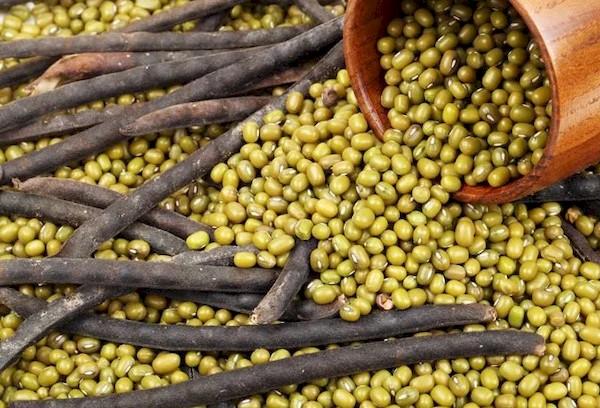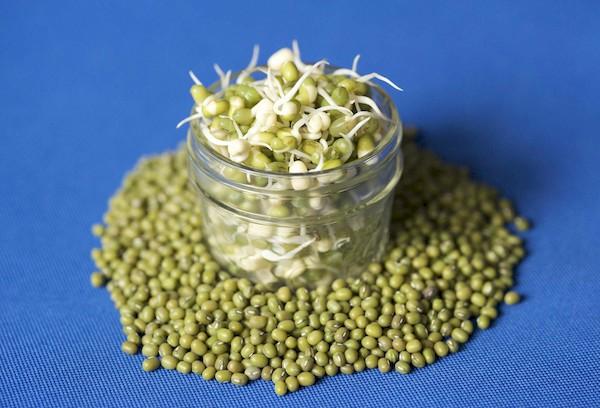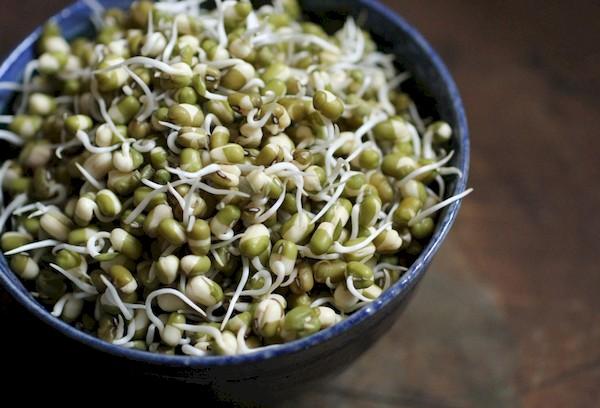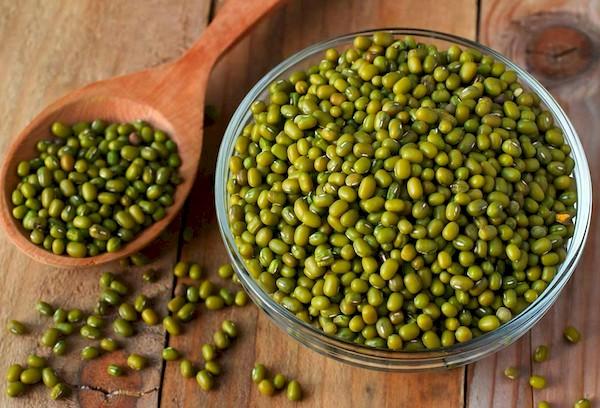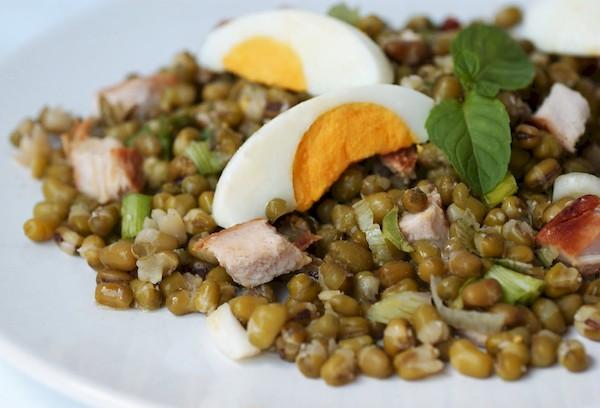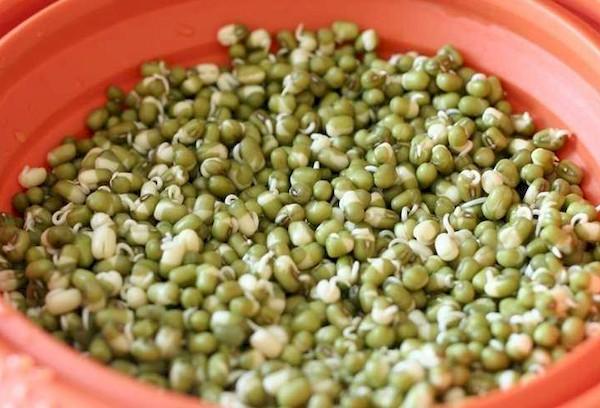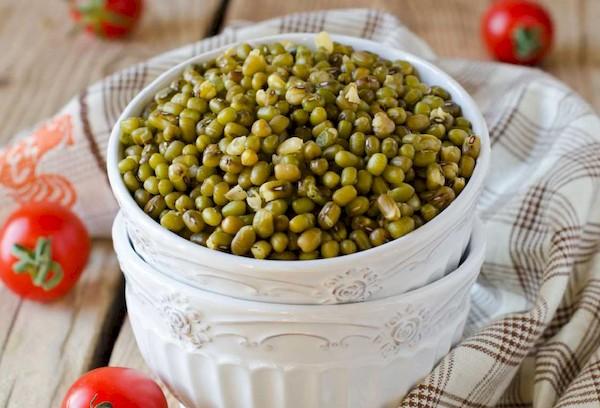What is mung bean and what is it made from?
Mung bean (lat. Vigna radiata) is an annual leguminous plant of the Legume family. Previously classified as a representative of the biological genus Beans, currently, along with Urdu and Adzuki, it is classified as a closely related genus Vigna. Other names for mung beans are also known: mung beans, lui dau, Asian beans, and golden beans. The last name is most often found in old sources.
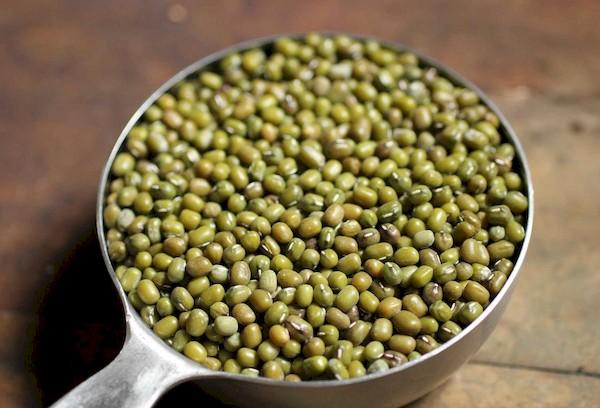
India, Pakistan and Bangladesh are considered the birthplace of the culture. On an industrial scale, mungbean is cultivated almost throughout the subtropical zone, but the largest production volumes are in Indonesia, Myanmar, China, Thailand and the Philippines. It is also grown in some states of America with arid, hot climates, and in southern Europe. Moreover, the harvest in these areas is harvested twice a year, at the beginning of summer and at the end of autumn. In the countries where it grows, the culture has become widespread and is actively used in cooking, but in Russia it is practically unknown to the general public.
What is mung bean made from?
Mungbean seeds, which are obtained from long, up to 20 cm, bean fruits, are eaten. There are 6-15 grains in one “pod”. They are small in size (3-6 mm in length) and rounded, barrel-shaped, characterized by a smooth surface and a slight glossy sheen. The color is usually dark green, yellow or olive, with brown, black or black-speckled green varieties being less common.
Mung bean sprouts are also popular in Asian cuisine—the grains are sprouted in a warm, humid environment. “Microgreens” are characterized by a high content of vitamins and are considered an excellent way to restore strength after illness or during active physical and mental activity.
Few people know that mung bean is also what “glass” noodles are made from, known to Russian and European consumers as funchoza. It is prepared from mung bean starch and sold dried.
What is contained in 100 grams of mung bean
Mung bean has a high calorie content - 300 kcal per 100 g. The volume of proteins, fats and carbohydrates in a similar amount of product is 23.5/2/46 g, respectively. In addition, these beans are rich in dietary fiber, fiber and the following beneficial elements:
- beta-carotene;
- vitamins B1, B2, B5, B6, B9, C, E, K and PP;
- iron;
- potassium;
- calcium;
- magnesium;
- manganese;
- copper;
- sodium;
- selenium;
- phosphorus;
- choline;
- zinc
Thanks to its rich chemical composition, mung bean has a complex positive effect on the body - it stabilizes metabolic processes, improves the condition of bones and muscles, stimulates the functioning of the intestines and kidneys, increases overall performance and helps prevent diseases of the visual organs.
There are few contraindications to the use of mung bean - it must be excluded from the diet in case of individual intolerance and during periods of acute food allergies. People suffering from serious metabolic disorders, gastrointestinal diseases and infectious intestinal diseases should limit or exclude these beans from the diet. You should also not give mung bean dishes to children under 3 years of age to avoid colic and flatulence.
Types of mung bean
The Australian mung bean association has developed various varieties of the crop. Conventionally, these varieties are divided into 2 groups - black and green mung bean.
The first type of beans is not very common in cooking and is rarely found even in specialized stores. The green variety is more popular and is easy to purchase.
What is prepared from mung bean: 10 popular dishes
While many Russian consumers don’t even know what kind of product mung bean is, it is widespread in Asian cuisine and vegetarian nutrition programs. The following types of dishes are prepared based on beans with a pleasant, “nutty” taste:
- shavli-mash and kichiri-mash (popular in Tajik and Uzbek cuisine, they are a mixture of boiled rice and mung bean, seasoned with vegetable oil, served as an independent treat or as a side dish for meat);
- dhal (Indian soup made from beans, vegetables, spices and coconut milk);
- deep-fried mung bean (deep-fried mung bean seeds seasoned with spices);
- meat and vegetable soups, puree soups;
- stew with beef, chicken or seafood;
- side dishes for meat, poultry and fish;
- sweet and unsweetened porridges;
- salads;
- sauces, fillings for pies, pies and dumplings;
- desserts and drinks (especially popular in Chinese cuisine, where “sweet water” based on pureed mung bean is served both hot and chilled).
Regarding the last type of dishes, consumers note that to a person unaccustomed to such food, they will seem very strange due to their specific, unusual taste.
How to choose high-quality mung beans in a store
Mung bean is not often found in chain supermarkets; most of the products go to specialized stores that sell products in the PP category. A quality product meets the following requirements:
- “peas” have a uniform color and a slight glossy sheen;
- the shape of the beans is regular, round;
- the product is not damaged, the grains are smooth and not wrinkled;
- there are no foreign impurities, debris, or traces of insects in the mass;
- the packaging is perforated (if the contents do not “breathe”, this leads to the rapid formation of mold);
- the expiration date is indicated on the package (as a rule, it is 12 months, although if stored properly, the beans remain edible much longer, from one and a half to two years);
- the product is produced and packaged in Tajikistan, India, Australia or Uzbekistan (according to a number of sources, such a product is of the highest quality, and Chinese and Peruvian mung bean, according to unconfirmed data, is less environmentally friendly, since aggressive technologies are used during cultivation).
The best option for storing the product is a glass container that closes tightly or a fabric bag. It is also important to remember that the main “enemy” of mung beans is humidity, and choose a dry, well-ventilated place, protected from direct sunlight.
What is the difference between mung bean and lentils and peas?
Mung beans, peas and lentils are representatives of the same family - Legumes. But there are a number of important differences between them.
What is the difference between mung bean and lentils and peas:
- Growing conditions. Mung bean is more heat-loving than peas and lentils (although the latter is also susceptible to frost and sudden changes in weather).
- Appearance of the fruit. The “pods” of mungbean are narrow and long, cylindrical in shape, multi-seeded, brown, brown or black in color, the seeds are small and oval. Lentil beans are rhombic and small, about 10 mm long and up to 8 mm wide, containing from 1 to 3 flattened, sharp-edged seeds, the color of which depends on the variety.Pea pods are flat and elongated, each containing up to 10 dense green, round peas.
- Preparing to cook. Peas and lentils require mandatory pre-soaking. Mash requires such a measure only if it has been stored for a long time; fresh seeds can simply be sorted out and washed.
- Duration of processing. Lentils and peas take longer to cook than mung beans; they are ready in less than an hour. As a rule, 30-50 minutes of boiling over medium heat is enough.
- Calories and nutritional value. Lentils are the leader in these indicators - 100 g of product contains 352 kcal. Mungbean is somewhat inferior to it, where in a similar volume of cereal there are 300 kcal, peas are the lowest calorie of the listed types of beans - 298 kcal.
Another important point is that mung bean rarely provokes bloating in healthy adults, unlike peas and lentils. A slight increase in gas formation after consuming this type of bean is observed only in children, mainly preschool age, and people suffering from flatulence.
